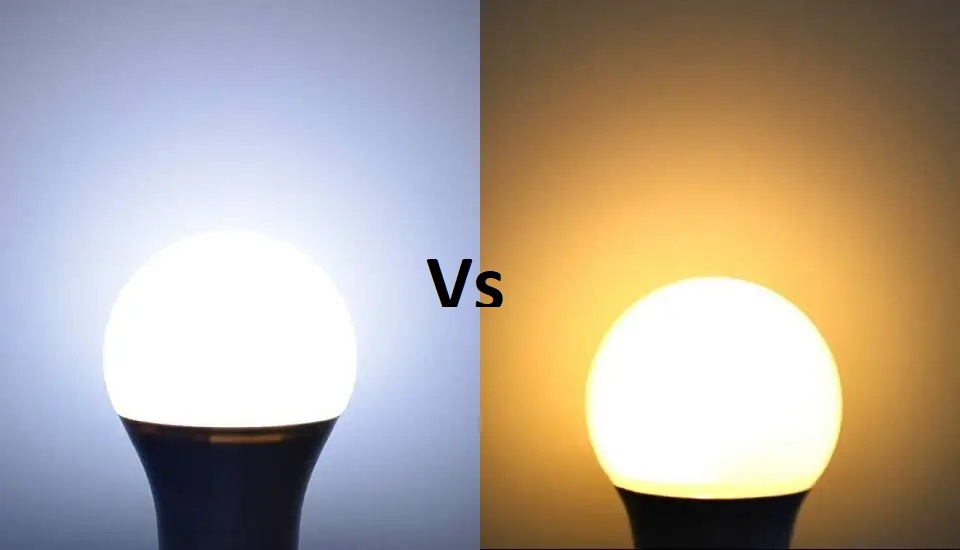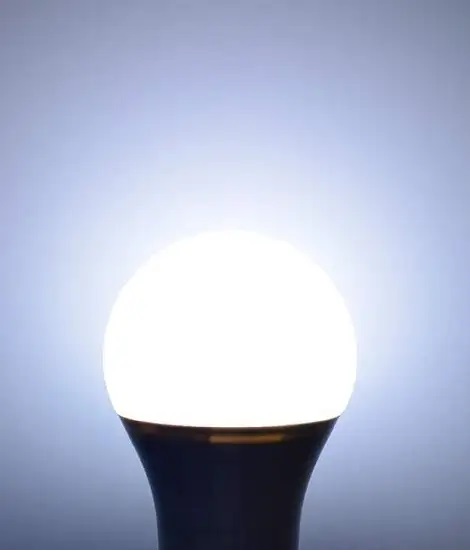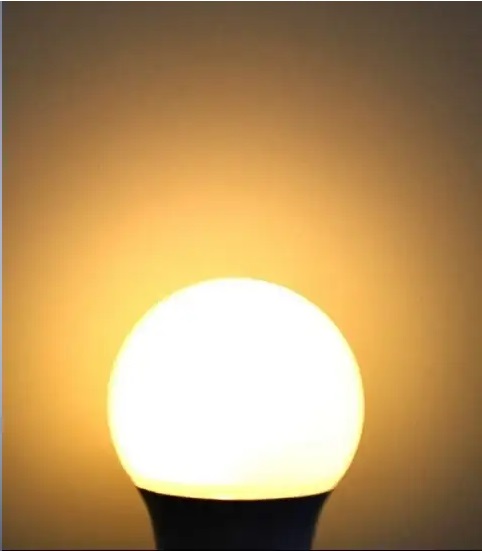Soft White vs Daylight Bulbs, what’s the difference and what scene do they help you achieve? We’re about to line up all the info and give you all the know-hows about both lights.
Read this article thoroughly to understand the differences and choose the one that suits you best!

Soft White vs Daylight Bulbs – The Purpose
When choosing a bulb for lighting, consider the amount of light you need. The color temperature of the light, the bulb’s lifespan, and the energy efficiency of the bulb. Soft light and daylight are two different types of lighting. They can have a significant impact on the look and feel of a scene.
What are Soft White Bulbs

Soft white bulbs are a type of light bulb that produces a warm, yellowish light. They are often used in residential settings. Such as living rooms, bedrooms, and dining rooms. As they create a cozy and relaxing atmosphere. Soft white bulbs are also a popular choice for decorative lighting. As they can provide a warm and inviting glow.
Soft white bulbs are available in several different types. That include incandescent, fluorescent, and LED. Incandescent soft white bulbs are the traditional type. But they are being phased out in favor of more energy-efficient options. Such as fluorescent and LED bulbs.
Fluorescent soft white bulbs are more energy-efficient than incandescent bulbs. But they can take a few seconds to reach full brightness when turned on. LED soft white bulbs are even more energy-efficient than fluorescent bulbs. And have a longer lifespan, but they can be more expensive upfront.
Soft white bulbs are often identified by their color temperature. Which is typically between 2700K and 3000K. This range is considered to be warm white and produces a soft, warm glow. That is similar to the light produced by incandescent bulbs.
Let’s dig into the differences!
Differences
Soft white and daylight bulbs are two different types of light bulbs. That produce different colors and qualities of light.
Soft white bulbs, also known as warm white bulbs, produce a yellowish or warm light. That has a color temperature of around 2700K to 3000K. This type of light is often used in residential settings. Such as living rooms and bedrooms, as it creates a cozy and relaxed atmosphere. Soft white bulbs are also a popular choice for decorative lighting. As they can give a warm and inviting glow.
Daylight bulbs are also known as cool white bulbs. They produce a bluish or cool light that has a color temperature of around 5000K to 6500K. This type of light is often used in commercial or industrial settings. Such as offices or workshops, as it provides a bright and energizing light. That can help improve focus and productivity. Daylight bulbs can also be used in photography and videography. Mainly to simulate natural outdoor lighting.
The main difference between soft white and daylight bulbs is the color temperature. Of the light they produce. Soft white bulbs produce a warm, yellowish light. That is suitable for creating a cozy atmosphere. While daylight bulbs produce a cool, bluish light. That is suitable for providing bright, energizing light in commercial or industrial settings.
Advantages of Soft White Bulbs
Soft white bulbs are also referred to as warm white bulbs. They have several advantages:
Cozy and relaxing atmosphere
Soft white bulbs produce a warm, yellowish light. This warm light creates a cozy and relaxing atmosphere. This makes them a popular choice for use in living rooms, bedrooms, and other areas of the home. Where a comfortable and inviting atmosphere is desired.
Flattering light for skin tones
Soft white bulbs are often used in makeup rooms and bathrooms. As they can provide a flattering light for skin tones. The warm light can help to minimize blemishes and create a natural-looking appearance.
Energy-efficient
Soft white LED bulbs are more energy-efficient than traditional incandescent bulbs. As they use less energy to produce the same amount of light. This can help to reduce energy costs and also lower your carbon footprint.
Long-lasting
Soft white LED bulbs also have a longer lifespan than incandescent bulbs. This means that they will need to be replaced less frequently. This can save you money in the long run, as well as reduce waste.
Disadvantages
For sure soft white bulbs have many advantages. But there are also some potential disadvantages that come with them:
Limited use in certain settings
Soft white bulbs may not be ideal for certain settings. Especially where bright or cool light is needed, such as in offices or workspaces.
Limited color rendering
Soft white bulbs aren’t really ideal for tasks that require accurate color representation. Such as in art studios or print shops. The warm, yellowish light may distort colors. And make it difficult to distinguish between shades.
Not as bright as other bulbs
Soft white bulbs may not be as bright as other types of light bulbs, such as daylight or cool white bulbs. This can make it difficult to see clearly in areas where bright light is needed, such as in garages or workshops.
Initial cost
While soft white LED bulbs are more energy-efficient and longer-lasting than incandescent bulbs. They may have a higher upfront cost. This can make it more difficult to switch to LED bulbs if you are on a tight budget.
What are Daylight Bulbs?

Daylight bulbs are a type of light bulb that produces a bright, bluish-white light. This light is similar to natural daylight. They have a color temperature that is typically between 5000K and 6500K. Which is higher than the color temperature of soft white or warm white bulbs.
Daylight bulbs are often used in commercial and industrial settings. Such as offices, hospitals, and workshops. As they provide a bright and energizing light. That can help improve focus and productivity. They are also used in photography and videography to simulate natural outdoor lighting.
Daylight bulbs are available in several different types, including incandescent, fluorescent, and LED. Incandescent daylight bulbs are not very energy-efficient. And are being phased out in favor of more efficient options, such as fluorescent and LED bulbs.
Fluorescent daylight bulbs are more energy-efficient than incandescent bulbs. And have a longer lifespan, but they can take a few seconds to reach full brightness when turned on. LED daylight bulbs are even more energy-efficient than fluorescent bulbs. And have a longer lifespan, and they are available in a variety of shapes and sizes.
Advantages
Daylight bulbs offer several advantages over other types of light bulbs:
Bright and energizing light
Daylight bulbs produce a bright, bluish-white light that is similar to natural daylight. This can help to improve focus and productivity in work and study environments. And can also help to reduce eyestrain and headaches.
Accurate color rendering
Daylight bulbs have a high color rendering index (CRI). Which means that they can accurately represent colors. This makes them ideal for tasks that require accurate color representation. Such as in art studios, print shops, and makeup rooms.
Long-lasting
Daylight LED bulbs also have a longer lifespan than incandescent bulbs. They will need to be replaced less frequently. This can save you money in the long run, as well as reduce waste.
Disadvantages
While daylight bulbs offer several advantages. There are also a few potential disadvantages to consider:
Harsh or cool light
Bright, bluish-white light produced by daylight bulbs can be perceived as harsh or cool. And would naturally be unliked by some people. This can make them less desirable in residential settings. Especially in settings where a softer, warmer light is often preferred.
Higher cost
Daylight LED bulbs can be more expensive to purchase upfront. Than traditional incandescent bulbs. However, they offer long-term energy and cost savings. Which can offset the initial investment.
Not suitable for all environments
The cool and bright light of daylight bulbs may not be suitable for all environments. For example, they may not be ideal for creating a warm and cozy atmosphere. Especially in living spaces or for certain types of photography.
Color distortion
While daylight bulbs have a high color rendering index (CRI). They can still cause some color distortion in certain materials. Such as fabrics and paints. This can make it difficult to achieve accurate color representation in some situations.
Conclusion
Both soft white and daylight bulbs have their own advantages and disadvantages. The choice between them ultimately depends on your specific lighting needs and preferences.
Soft white bulbs are ideal for creating a warm and cozy atmosphere in living spaces. And for providing a relaxing and comfortable ambiance. They are also a good choice for accent lighting, as they can help to highlight specific areas or objects.
Daylight bulbs, on the other hand, are ideal for work and study environments. As they provide a bright and energizing light. That can help to improve focus and productivity. They are also a good choice for tasks that require accurate color representation. Such as in art studios, print shops, and makeup rooms.
When choosing between soft white and daylight bulbs, it is important to consider some important factors, such as the intended use of the space, personal preferences, and budget. Ultimately, both types of bulbs offer unique benefits and can be used to create the desired lighting effect in a variety of settings.
